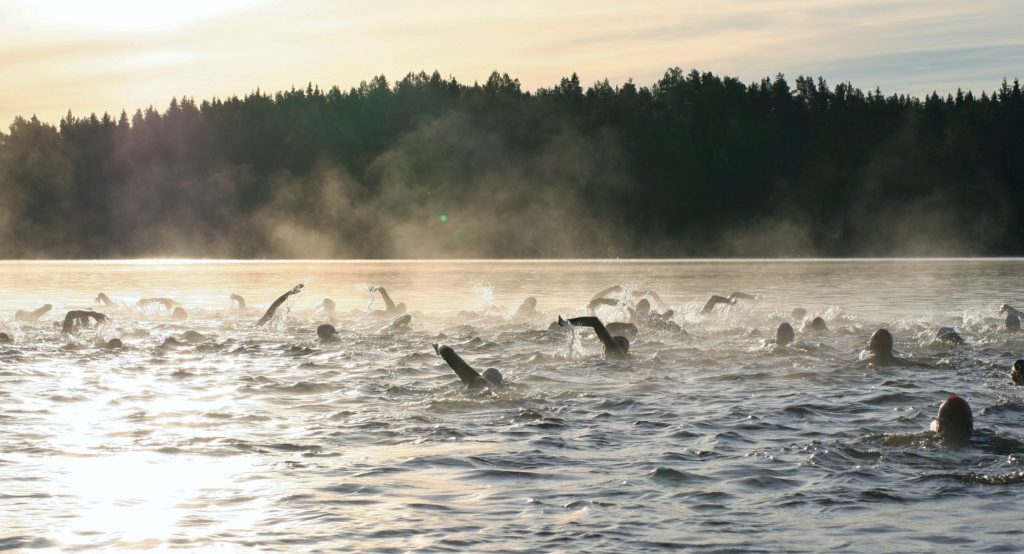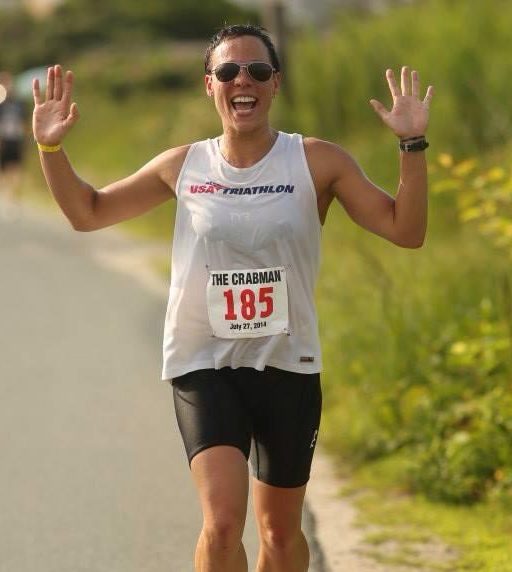Confident Open Water Swimming Tips – Part III

Confident open water swimming comes with competence, and there are three core competencies in open water swimming: sighting, strength and endurance, and sustainability. Let’s explore each component – what it is, when competency is achieved, how to develop skills, and extra tips for success. In this third installation of confident open water swimming tips, we look at sustainability for open water swimming.
Objective: Attain mental and physical stamina to swim long durations in open water conditions.
Key Results: Feel confident swimming uninterrupted intervals of quarter, half, or full mile distances, based on individual goals. Be capable of enduring cold-water immersion for extended periods of time. Utilize techniques that enhance efficiency, reduce anxiety, and conserve energy.
Importance: Since open water swimming offers little rest and starting assistance, with the absence of pool walls, there is higher energy cost, and therefore, greater need to properly meter energy stores. Optimizing the nervous, pulmonary (lungs) and musculoskeletal systems build the stamina and sustainability to go the distance.
Focus: Progressive volume increases by extending practice set distances and adding total distance to workouts.
Development:
- Mindset
- Attention During Practice Sets
In each block of a swim practice, choose an important technique to develop, like swimming tall or feeling smooth. Bring awareness of the technique into the body and work on perfecting it in each set.
-
- Adopt a Mantra to Train the Brain and Body
Using a mantra during each swim stroke cycle attenuates the mind. For instance, reciting calm with entry of left hand, and steady with entry of right hand, the brain repetitively receives the message to move calmly and steadily. This form of self-guidance helps teach the body to switch from a heightened, sympathetic (fight or flight) mode into a manageable, parasympathetic (rest and relaxed) mode, reducing anxiety and allowing easy breathing.
- Technique
- Practice Long Distance Assist Drills
This is one of the best drills to learn how to lengthen “the vessel” and glide to provide more efficiency, smoothness, and speed. While practicing freestyle, lengthen the front balancing hand, twisting body slightly onto side edge, and bring stroking hand entry in past the goggle to reach out and meet front hand, like passing a baton in a relay. Use “tagged” front hand into stroke, twisting body in the other direction while other arm reaches into glide and balance. This will create long gliding actions with proper body rotation. Add 3 – 5x 100 Catch Up Drill to warm-up.
To increase efficiency and allow the body to last longer amounts of time working, try increasing distance per stroke by reducing stroke count. First, attain baseline count for a 25 yard or meter distance. Then, try to reduce the next 25 by one stroke, and again by one stroke in the next, and again in a fourth 25. The count might be 21 strokes first, then 19, 18, and finally 16. By achieving this stroke reduction, the body is gliding longer, with less effort. Add 2 – 4x 100 Distance Per Stroke to warm-up.
- Preparation
- Tune Self-Care and Logistics
Use solid nutrition and hydration leading up to open water swim practices to assure health and bring athlete nutrition to use during exercise. Attain good gear that affords cold-water immersion, including open water appropriate goggles, triathlon specific wetsuit, neoprene cap, and gloves. Use a sports lubricant under wetsuit at neck and arms. Swim with a bright open water buoy for visibility and safety.
- Extra Confident Open Water Swimming Tips
- Practice other strokes like breaststroke or double arm backstroke as a alternative swim mode.
- Become comfortable treading water, which will assist when starts or breaks are in deep water.
- Practice swimming very intensely and flipping into back float to bring heart rate down quickly. Similar to using a mantra, this trains the body to switch gears from anxious to calm.
- Train with a buddy or group who can already go long distances and would like to help you improve.
Happy Swimming from Coach Cat!
Publisher’s Note: Part II can be found HERE and Part I can be found in our magazine that can be purchased HERE.

Catherine Sutton, MS is an endurance sports coach who believes exercise is a holistic healer and triathlon is the ultimate public health fitness initiative. Having grown up as a super active child into an aquatic athlete and eventual triathlete, she continues to discover how consistent, effective physical activity aids us on the path of happiness in mind, body, and spirit. Catherine has a MS degree in Exercise Science, holds coaching certifications by USA Triathlon, US Masters Swimming, and American Swimming Coach Association, and is an ACSM Certified Personal Trainer aspiring to become a Doctor of Physical Therapy. Along with triathlon training, Coach Cat loves to spend time with her partner, exploring Vermont, hiking, kayaking, and skiing, and enjoying the gifts of New England.









